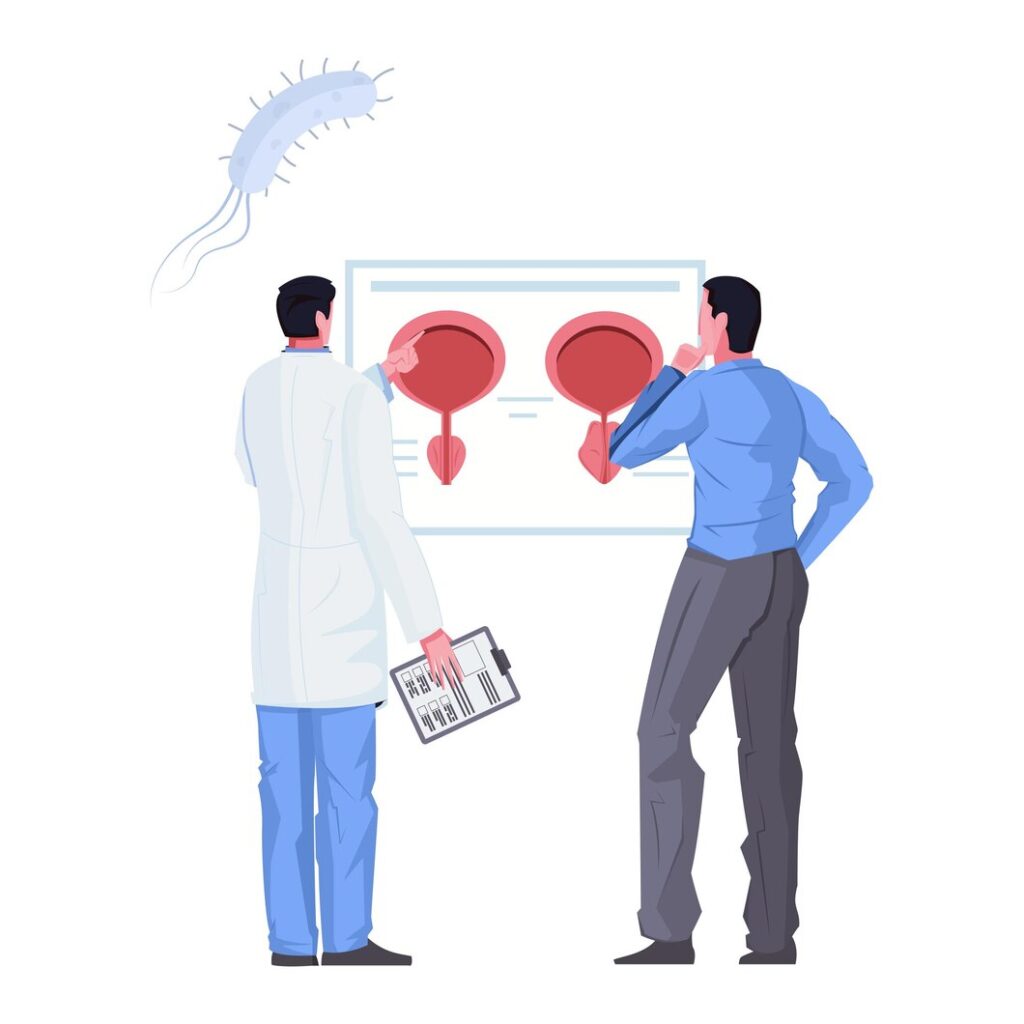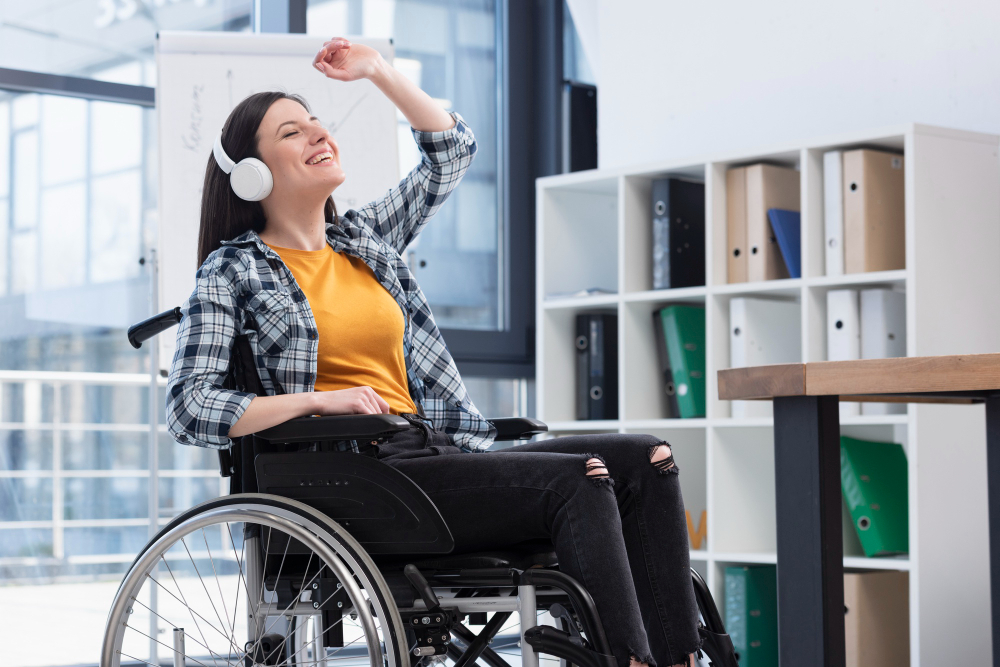Neurogenic bladder ;

What is Neurogenic Bladder?
Neurogenic bladder is a condition characterized by dysfunction of the bladder due to damage to the nerves that control bladder function. This disruption in nerve communication can lead to problems with storing or emptying urine properly, resulting in a range of symptoms and complications.
Causes of Neurogenic Bladder:
1. Neurological Conditions:
Neurogenic bladder is commonly caused by neurological conditions that disrupt the normal functioning of the nerves controlling bladder function. These conditions may include:
- Spinal Cord Injury (SCI): Trauma to the spinal cord, such as from a fall, car accident, or sports injury, can damage the nerves responsible for bladder control. The level and severity of the injury determine the extent of bladder dysfunction.
- Multiple Sclerosis (MS): MS is a chronic autoimmune disorder that affects the central nervous system, including the brain and spinal cord. Damage to the myelin sheath surrounding nerve fibers can disrupt nerve signals to the bladder, leading to neurogenic bladder.
- Parkinson’s Disease: Parkinson’s disease is a progressive neurological disorder that affects movement and coordination. It can also impact autonomic nervous system function, including bladder control, resulting in neurogenic bladder symptoms.
- Stroke: A stroke occurs when blood flow to part of the brain is interrupted, leading to brain damage. Depending on the location and extent of the brain injury, stroke survivors may experience neurogenic bladder due to disruption of neural pathways involved in bladder control.
2. Spinal Cord Tumors:
Tumors of the spinal cord or surrounding structures can compress or damage nerve fibers responsible for bladder function. This can result in neurogenic bladder symptoms, such as urinary incontinence, urinary retention, or changes in urinary habits.
3. Nerve Damage from Diabetes:
Diabetes mellitus, particularly when poorly controlled over time, can lead to nerve damage (diabetic neuropathy) affecting various parts of the body, including the bladder. Diabetic neuropathy can impair bladder sensation and coordination, contributing to neurogenic bladder dysfunction.
4. Pelvic Surgery or Trauma:
Surgical procedures or traumatic injuries involving the pelvis or lower abdomen can cause nerve damage that disrupts bladder function. Damage to the pelvic nerves or structures supporting bladder control can result in neurogenic bladder symptoms.
5. Congenital Abnormalities:
Rarely, neurogenic bladder may be present from birth due to congenital abnormalities affecting the development of the nervous system or spinal cord. Conditions such as spina bifida, a neural tube defect, can lead to neurogenic bladder and other associated complications.
What are Symptoms of Neurogenic Bladder?
Symptoms of neurogenic bladder can vary depending on the underlying cause and the type of dysfunction present.
1. Urinary Incontinence:
Neurogenic bladder can lead to urinary incontinence, characterized by the involuntary leakage of urine. This may manifest as urge incontinence, where there is a sudden and uncontrollable urge to urinate, or stress incontinence, which occurs during activities such as coughing, sneezing, or lifting.
2. Urinary Retention:
Another common symptom of neurogenic bladder is urinary retention, where the bladder is unable to empty fully during urination. This can result in a constant feeling of fullness in the bladder, difficulty initiating urination, or a weak urine stream.
3. Changes in Urinary Habits:
Individuals with neurogenic bladder may experience changes in their urinary habits, including increased urinary frequency (polyuria) or decreased urinary frequency (oliguria). They may also report nocturia, the need to urinate frequently during the night, which can disrupt sleep patterns.
4. Difficulty Initiating or Stopping Urination:
Neurogenic bladder can cause difficulty initiating urination (urinary hesitancy) or stopping urination once it has started (incomplete voiding). This may result in a prolonged or interrupted urine stream, as well as a sensation of incomplete bladder emptying.
5. Urinary Tract Infections (UTIs):
Individuals with neurogenic bladder are at increased risk of developing urinary tract infections (UTIs) due to incomplete bladder emptying and urinary stasis. Symptoms of UTIs may include urinary urgency, dysuria (painful urination), hematuria (blood in the urine), and fever.
6. Overflow Incontinence:
Overflow incontinence occurs when the bladder becomes overly full and urine leaks out uncontrollably. This may present as dribbling or continuous leakage of urine, particularly in individuals with urinary retention or impaired bladder emptying.
7. Autonomic Dysreflexia (in Spinal Cord Injury Patients):
In individuals with spinal cord injury affecting the autonomic nervous system, neurogenic bladder may trigger autonomic dysreflexia, a potentially life-threatening condition characterized by sudden, severe hypertension, headache, flushing, and sweating. This requires immediate medical attention.
Diagnosis:
1. Clinical Examination:
A thorough clinical examination is essential in diagnosing neurogenic bladder. Healthcare providers will evaluate the patient’s medical history, including any neurological conditions, injuries, or surgeries that may contribute to bladder dysfunction. They will also assess symptoms such as urinary incontinence, urinary retention, and changes in urinary habits.
2. Laboratory Tests:
- Urinalysis: A urinalysis may be performed to check for signs of infection, such as the presence of white blood cells or bacteria in the urine. Urinary tract infections (UTIs) are common complications of neurogenic bladder and can exacerbate symptoms.
- Urinary Culture: If signs of infection are present, a urine culture may be ordered to identify the specific bacteria causing the infection and determine the appropriate antibiotic treatment.
3. Radiological Imaging:
Radiological imaging studies are often used to assess bladder structure and function and identify any underlying neurological abnormalities. Common imaging modalities include:
- X-ray: A plain abdominal X-ray may be performed to evaluate bladder size, shape, and position. This imaging modality can help detect urinary retention or bladder stones.
- Ultrasound (USG): Ultrasound imaging of the bladder can provide real-time visualization of bladder volume, wall thickness, and any structural abnormalities. It is non-invasive and does not involve exposure to ionizing radiation.
- Computed Tomography (CT) Scan: CT imaging may be used to obtain detailed cross-sectional images of the bladder and surrounding structures. CT scans can help identify spinal cord lesions, tumors, or other anatomical abnormalities that may contribute to neurogenic bladder.
4. Findings and Interpretation:
- Bladder Distention: Radiological imaging may reveal bladder distention, indicating urinary retention and poor bladder emptying.
- Structural Abnormalities: CT scans can identify structural abnormalities such as bladder diverticula, bladder stones, or spinal cord lesions that may be contributing to neurogenic bladder symptoms.
- Residual Urine: Ultrasound or CT imaging may detect significant residual urine volume in the bladder after voiding, indicating incomplete bladder emptying and urinary retention.
5. Other Tests:
- Urodynamic Studies: Urodynamic testing involves a series of specialized tests that assess bladder and urinary sphincter function. These tests measure bladder pressure, capacity, and compliance, as well as detrusor muscle activity during filling and voiding.
- Cystoscopy: Cystoscopy is a procedure in which a thin, flexible tube with a camera (cystoscope) is inserted into the bladder to visualize the bladder lining and assess for any abnormalities, such as inflammation or bladder stones.
- Cystourethrogram Findings in Neurogenic Bladder:
- During a cystourethrogram, common findings in neurogenic bladder include abnormal bladder filling patterns, urinary reflux, urethral dysfunction, bladder neck dysfunction, elevated post-void residual volume, and diverticula formation. A characteristic “Christmas tree appearance,” indicative of bladder wall dysfunction and chronic obstruction, may also be observed. These findings help guide treatment decisions for patients with neurogenic bladder, emphasizing the importance of collaboration between healthcare providers.
Treatment for Neurogenic Bladder:
Treatment for neurogenic bladder aims to manage symptoms, prevent complications, and improve quality of life. Options may include:
- Medications: Certain medications, such as anticholinergics or beta-3 agonists, can help relax the bladder muscles, reduce urgency, and improve bladder function.
- Intermittent Catheterization: For individuals with urinary retention, intermittent catheterization may be necessary to empty the bladder regularly and prevent urinary retention-related complications.
- Botulinum Toxin Injections: In some cases, injections of botulinum toxin into the bladder muscle can help relax overactive bladder muscles and improve bladder control.
- Surgery: Surgical interventions, such as bladder augmentation or urinary diversion procedures, may be considered in severe cases or when other treatments have been ineffective.
Lifestyle Modifications:
In addition to medical treatments, certain lifestyle modifications can help manage symptoms and improve bladder function in individuals with neurogenic bladder. These may include:
- Fluid Management: Monitoring fluid intake and avoiding excessive consumption of bladder irritants such as caffeine and alcohol can help reduce urinary frequency and urgency.
- Pelvic Floor Exercises: Practicing pelvic floor exercises, also known as Kegel exercises, can help strengthen the muscles that control bladder function and improve urinary continence.
- Scheduled Voiding: Establishing a regular voiding schedule can help train the bladder to empty more effectively and reduce episodes of urinary incontinence or retention.
Summary:
Neurogenic bladder is a complex condition that requires comprehensive management to address symptoms and prevent complications. By understanding the underlying causes, recognizing symptoms, and implementing appropriate treatment strategies, individuals with neurogenic bladder can achieve better bladder control and improve their overall quality of life. Collaboration between patients, healthcare providers, and specialists is essential to develop personalized treatment plans tailored to individual needs and preferences. With proper management and support, individuals with neurogenic bladder can effectively manage their condition and lead fulfilling lives.


Pingback: Home - Common health conditions - ECG Oxford